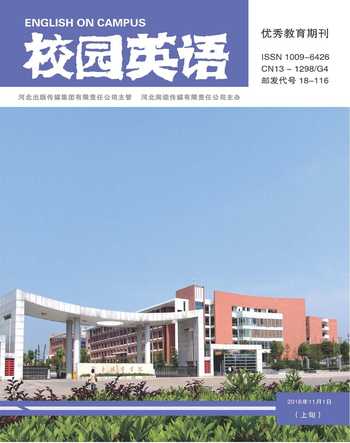How to Develop Reading Strategies in Extensive Reading
陈腊梅
【Abstract】Extensive reading demands readers to read in quantity for general, overall meaning, and for information. Learners are supposed to know how to choose appropriate reading tactics in accordance with different reading purposes. This paper mainly proposes some effective strategies to develop learners reading skills and competency.
【Key words】extensive reading; reading strategies
I. Introduction
A major goal for Extensive reading instruction is the development of strategic readers. Strategic readers understand the goals of a reading activity and have a wide range of well-practiced reading tactics.
The essence of extensive reading is to read as much as possible and reading speed is usually faster. We need to acquire some common reading tactics to improve their reading speed and understanding.The approaches to improve reading strategies will be analyzed from the following two aspects: forming reading skills, improving reading speed.
II. Forming Reading Skills
Extensive reading is different from other readings; it may concern a variety of skills, such as reading speed, overcoming new words within the limited time. The extensive reading teaching purposes are specialized in skimming, scanning, reading for detailed comprehension, etc.
Skimming is the most important and frequently used strategy in extensive reading, which refers to reading quickly through the text to get a general idea of what it is about. It doesnt focus on the specific words or phrases, but on the meaning of the whole text, the general idea and the viewpoint of the writer. Readers can get the information and knowledge they need and the writers thoughts through skimming. When skimming, readers should read only for information and clues which provide an idea of the central theme or topic of a piece of writing. Sometimes they just look quickly through the abstract, materials. Readers should not stop to look up the new words they come across and just guess the meaning from the context.
By scanning we mean glancing rapidly through a text either to search for a specific piece of information (e.g. a name, a date). This skill means that they do not have to read every word and line; on the contrary, such an approach would stop them scanning successfully.
Whether readers scan or skim depends on what kind of text they are reading and what they want to get out of it. They may scan a computer manual to find the one piece of information they need to use their machine, and they may skim a newspaper article to get a general idea of whats been happening.
Reading for detailed comprehension must be seen as something very different from the reading skills mentioned above. When looking for details, we expect students to concentrate on what they are reading.
III. Improving Reading Speed
Like any other kind of language learning, the improvement of English level depends on a great deal of information input. So we need to read as much as possible to enhance language acquisition. Fast reading is a positive and effective method in the extensive reading process. Research has shown a close relation between speed and understanding. An increase in reading rate has also been paralleled by an increase in comprehension. Then what should we do to increase reading speed? There are several strategies.
(i) The increase of eye span
We should learn to work in thought units. Thought units help students move faster. Readers should increase the number of words they see and they are going to group them according to context. One thing that help us increase reading speed is to use a fingertip or pen as a pointer to quickly and directly to the next line.
(ii) Restraining translating by heart
One way to restrain reading by heart is setting a limited time so that there is no time to translate by heart. Readers may choose some easy and interesting material for them to read as quickly as possible, and check how much time they use. Besides, Silent reading was encouraged in extensive reading.
(iii) Skipping over new words
It is wise to just treat new words as a mark without searching the accurate meaning, for they dont affect much on gaining main information.
(iv) Guessing the meaning of new words from context
There are some approaches to help readers to guess the meaning of new words while reading, such as by text hints, by noun appositive, by comparing the meaning of words, and by logic inference. We can use titles, the table of contents and the cover of a book to get an idea of what is about.
IV. Conclusion
Extensive reading is different in many ways from traditional reading practice, A major goal for reading instruction is the development of strategic readers. Strategic readers understand the goals of a reading activity and have a wide range of well-practiced reading tactics. The correct reading skills can improve reading and understanding abilities. We acquire the language abilities through everyday practicing.
References:
[1]Day,R.&Bamford,J.(1998).Extensive Reading in the Second Language Classroom[M].Cambridge:Cambridge University Press.

